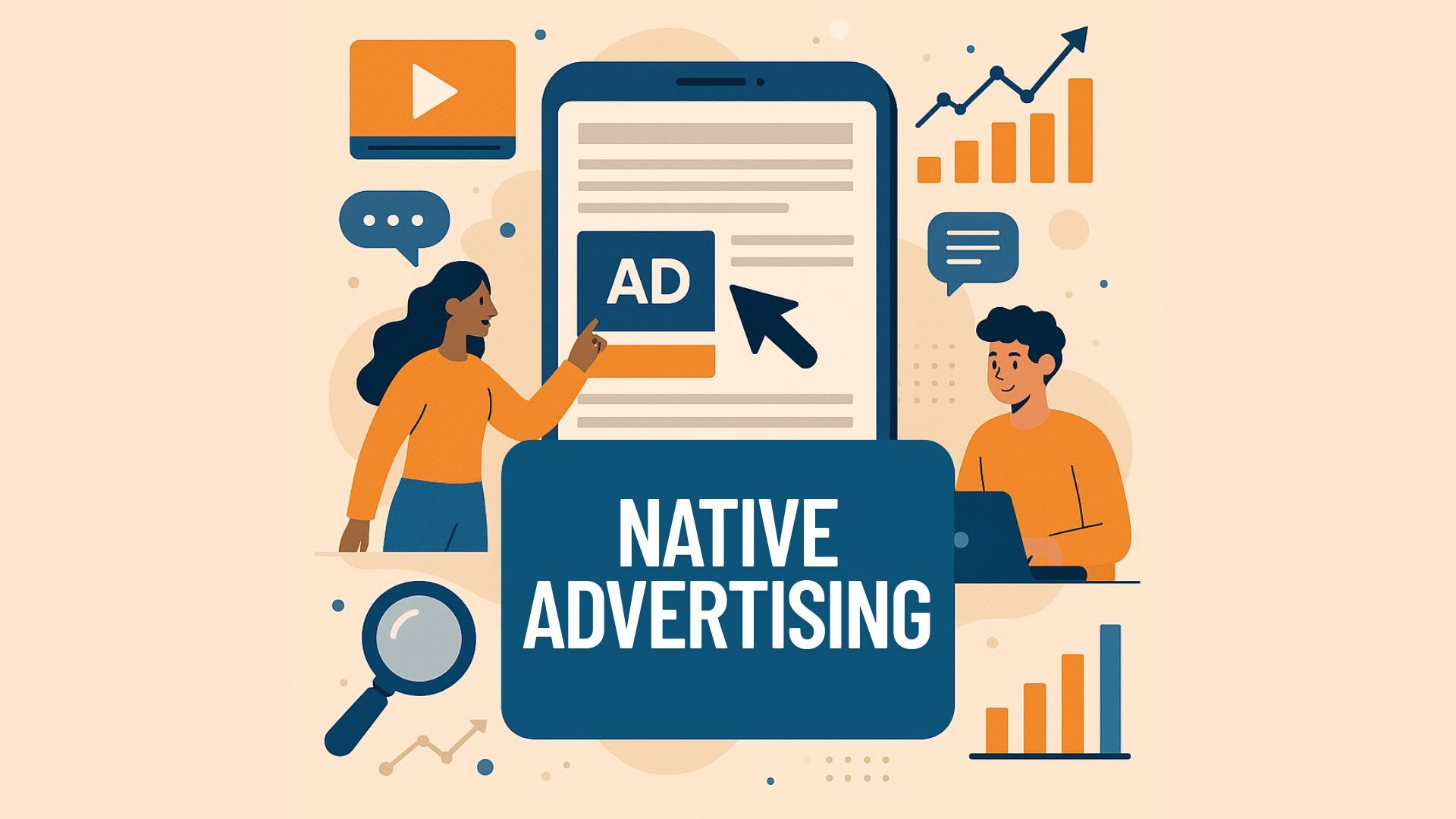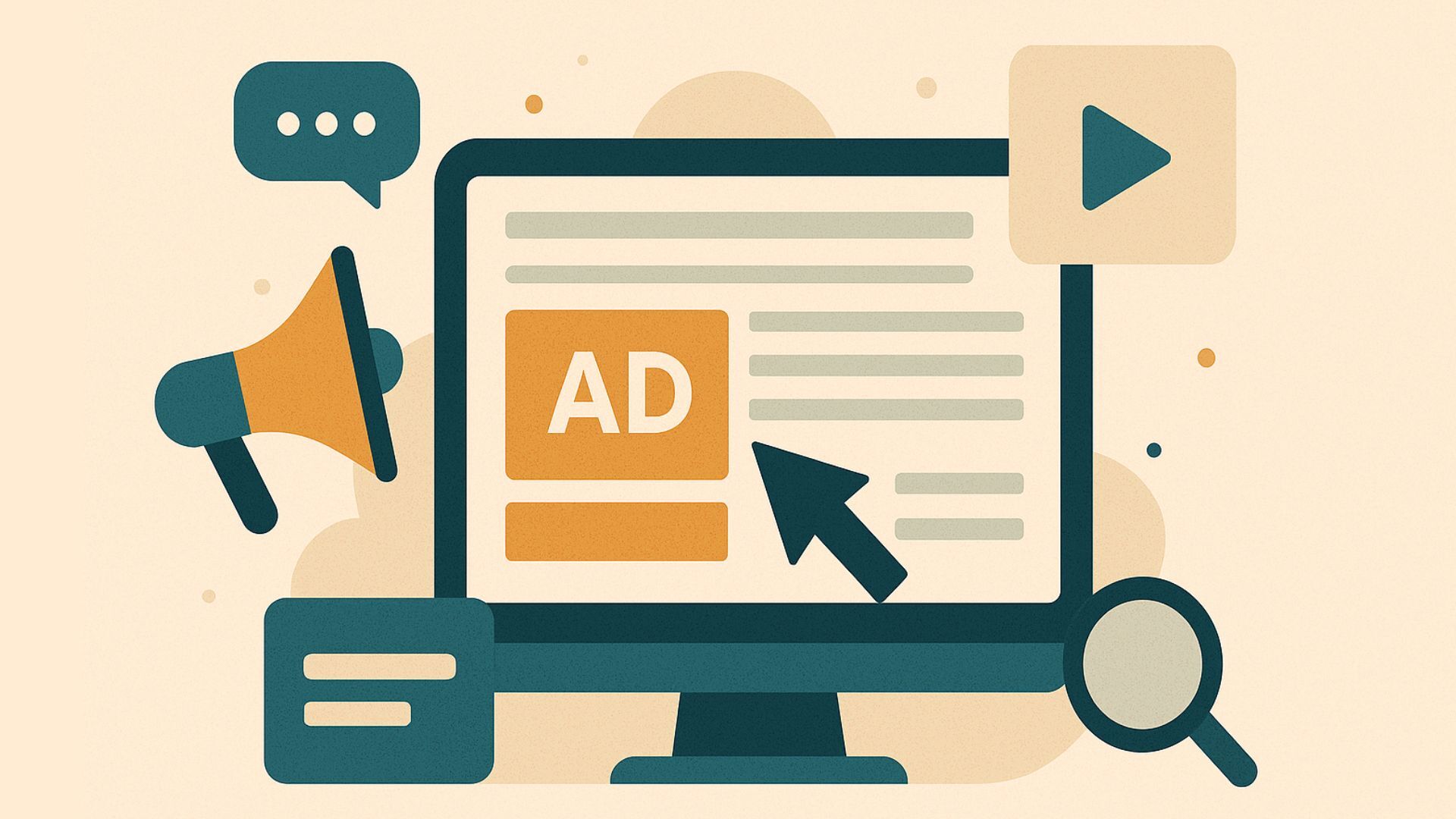What is native advertising?

In today’s digital landscape, consumers are becoming increasingly adept at tuning out traditional advertisements, prompting marketers to seek more subtle and effective ways to capture attention. Native advertising has emerged as a powerful solution, blending promotional content seamlessly into the platforms people already trust and enjoy. Unlike disruptive banner ads, native ads integrate naturally with editorial content, offering value without interrupting the user experience. This blog explores what native advertising is, how it works, its evolving formats, and why it has become a cornerstone of modern marketing strategies.
Key Takeaway:
Native advertising is paid content that matches the look, feel, and functionality of the platform on which it appears. It drives higher engagement and brand trust by blending seamlessly with editorial content. Marketers use native ads to reach target audiences without disrupting the user experience.
Understanding Native Advertising
Native advertising is a form of paid media designed to blend seamlessly with the surrounding content on a platform. Unlike traditional display ads or banner ads, which can disrupt the user experience, native ads seamlessly integrate with the platform’s look, feel, and editorial style, appearing as a natural part of the page or feed. This seamless approach allows advertisers and publishers to promote a product or service without jarring interruptions. For brands and marketers, native advertising offers a powerful way to reach their target audience while maintaining trust and delivering genuine value.
The rise of native advertising was primarily driven by banner blindness and growing ad fatigue. As consumers became adept at ignoring intrusive display ads, marketers needed better ways to engage users. This led to the development of ads that integrate into natural content flows, providing information and stories users want to consume. Over the past decade, native ads have evolved from simple in-feed articles to sophisticated video content and programmatic placements that align with diverse types of content in real-time.
How Native Advertising Works
Native advertising works by embedding paid content into a platform in a way that aligns with the surrounding editorial content. Whether it’s an article, a social media post, or a native video ad, the content is crafted to mirror the platform’s style and tone. This approach ensures ads integrate seamlessly into the natural user experience.
By designing native ads that match the site’s look and feel, advertisers can avoid disrupting the flow, resulting in higher engagement rates. Native ads don’t stand out as obvious promotions; instead, they appear as a natural part of the user’s browsing journey. This strategy makes native advertising campaigns highly effective for building brand awareness and fostering user engagement.
Types of Native Advertising
In-Feed Ads
In-feed ads appear directly within social media feeds or content streams on news and entertainment sites. These native ad formats are among the most common, allowing sponsored content to blend naturally with organic posts. Brands use native advertising best in-feed when they provide content that matches what users already enjoy.
Sponsored Content and Advertorials
Sponsored articles, also known as advertorials, are long-form pieces that deliver value while subtly promoting a brand. These native ads are designed to educate or entertain, fitting the platform’s editorial style so well that they don’t disrupt the reading experience. A classic example of this is Netflix’s collaboration with The New York Times for “Orange Is the New Black,” where an investigative-style article also promoted the show.
Native Video Ads
Native video is rapidly growing as brands increase their investment in video ad spend. These videos autoplay in social media feeds or within publisher sites, matching the format of organic video content. Examples of native ads in video form include BuzzFeed’s branded recipe videos, which seamlessly integrate products.
Widgets and Listings
E-commerce and aggregator sites use widgets and listings that mirror organic search results but are actually paid placements. These ad units align with the surrounding content, helping to drive conversions without disrupting the browsing experience.

Benefits of Native Advertising
Native advertising offers clear advantages over traditional paid ads. Because native ads are designed to align with a platform’s editorial content, they achieve higher engagement rates and better click-through rates. A well-crafted native advertisement can outperform standard banner ads by delivering content users actually want to consume, resulting in longer time spent with the brand message.
This format also builds stronger brand awareness and credibility. When users interact with paid content that feels relevant and authentic, they’re more likely to remember the brand and trust its message. Unlike disruptive display ads, native advertising seamlessly integrates into natural user experiences, providing genuine value through informative articles, entertaining videos, or helpful product guides. This makes native campaigns more effective not just for immediate metrics but also for enhancing long-term customer perception.
Native advertising’s versatility is another key advantage. It works seamlessly across different types of content and platforms, from in-feed social media posts to sponsored listings and native video ads. By maintaining a positive browsing experience while still achieving marketing goals, native advertising has become a crucial part of modern digital marketing strategies.
Challenges and Ethical Considerations
Transparency and Disclosure
To maintain trust, native advertising must be transparent and clearly labeled. The Federal Trade Commission requires that native ads be clearly labeled as sponsored content. Brands need to ensure disclosures are prominent so users understand the difference between paid content and editorial content.
Content Quality
Native ads are most effective when they offer valuable information. Advertisers and publishers must focus on creating content that genuinely serves the reader’s interests, rather than just promoting their products. Poor-quality native ads may lead to user frustration and hurt credibility.
Maintaining Credibility
Native ads must align with the platform’s editorial style and tone. When paid content fails to match the surrounding content, it stands out in the wrong way, undermining trust. The best native campaigns seamlessly integrate into natural content flows while still being clearly disclosed.
Measuring ROI on Native Advertising
Success in native advertising is measured by more than just impressions. Marketers examine metrics such as user engagement, ad captures, time spent on content, and click-through rates. These metrics help determine how effectively native ads integrate into natural user experiences and drive meaningful interactions. Programmatic tools also enable advertisers to refine campaigns in real-time, optimizing ad placements to maximize return on advertising spend.
The Future of Native Advertising
The future of native advertising is closely tied to growing trends in video advertising and programmatic placements. As more brands allocate budget to native video ads and interactive formats, the focus will remain on creating ads that seamlessly integrate into content streams. US native ad spend continues to rise, reflecting confidence in this strategy’s ability to deliver high engagement and value to both brands and consumers.
Conclusion
To succeed with native advertising, marketers must prioritize authentic storytelling that aligns with their audience’s interests. Always use native formats that match the platform’s editorial style and provide clear disclosures to maintain transparency and consistency. By focusing on creating valuable content that blends naturally into the user experience, brands can build trust, boost engagement, and achieve stronger ROI from their paid media campaigns.


